Yoga to Promote Digestion, by Michelle Chua
11/18/2022
It's important to remember that digestion is multi-faceted. We humans are constantly digesting life through all of our senses, consuming not only food but all kinds of news and media, and the situations that arise daily. How do you take in the nourishment, ie. nutrients or knowledge, from whatever you're currently digesting and shed the waste that no longer serve your well-being? This is a constant part of the yoga practice identified in the first limb of yoga and is called aparigraha, defined as non-attachment and ability to let life flow. (Read more about the 8 Limbs of Yoga here.) In this article, you'll find three pre-recorded yoga practices of various lengths, in which I guide you through ways to promote digestion physically, mental-emotionally and energetically, and an additional resource that shares the perspective of a Colon Hydrotherapist. First, here's a recent Guided 1-hour Gentle Yoga Session to Promote Digestion Mentally and Physically: Secondly, here's a shorter 22-minute yoga practice, which includes postures, breathwork and a visualization meditation taught at a 2017 Yoga for Digestion Workshop I co-facilitated, called Nourish. Lastly, through the understanding of the 7 Chakras, or main energy centers in your body, learn to balance energy through your solar plexus energy center, or manipura chakra. This is responsible for digestion and includes your inner fire of willpower to protect your core values and shed the unnecessary, releasing stagnancy in different aspects of your life to continue evolving and aligning with your life's purpose. Here's a 16-minute guided Yoga practice with breathwork and meditation from our 28-day online class series, Daily Yoga Habit: For additional holistic perspective on promoting healthy digestion, check out this interview with Colon Hydrotherapist Monisha Garner. In this two-part conversation, If Your Poop Could Talk, find out about the key role your digestion plays in overall wellness, especially immune system function, and learn daily wellness practices to optimize your health. I hope you find these resources helpful in nourishing and purifying your mind, body and spirit. Remember, that digestion begins even before your mouth receives that first bite or your senses receive stimuli. Through the awareness that yoga cultivates, be proactive about the stimuli you choose to surround yourself with, including the foods you give yourself ready access to. May we all be nourished, release what we don't need to carry on this journey anymore and thrive! About the AuthorMichelle Chua is a lover of dance, delicious vegan food and nature. A Registered 500-hour Yoga Alliance Teacher, she has been guiding yoga retreats in California and abroad and weekly yoga classes in Los Angeles and online since 2010. LEARN MORE...
0 Comments
1. Develop a daily meditation practice. Meditation is a means of learning to befriend your mind, so that you have the freedom to choose your perception of life's situations. It’s a practice of witnessing the fluctuations of your thoughts and sensations while grounding through discernment of what you choose to feed your focus. Through consistently studying your mind, you can become more conscious of your needs underneath the push and pull of external stimuli. If you’re new to meditating, try sitting in silence for 5 minutes a day, and if you’re not new, invest a regularly allotted time period for it, perhaps first thing when you rise from bed before the mind becomes so active. Check out this playlist of meditations I've created for you on our YouTube channel!
2. Move your body daily at least 20 minutes per day, doing something you enjoy that challenges you playfully. It's imperative to create conscious healthy habits with an attitude of loving kindness to yourself. If you love to be in nature, hike, walk or run nearby trails 3-5 times a week. I enjoy the challenge of running up and down hills and the rewards of the higher perspective of the city and the fun feeling of soaring like a bird downhill. Or, try a slow walking meditation while earthing and forest-bathing to connect with the healing energy of Mother Nature. Check out these mindfulness practices here. If you enjoy dancing, perhaps invest in taking samba, salsa and belly-dance classes to share the energy with other dance-lovers, and you may also become part of a community of movers who inspire you to show up. Our yoga community meets several days a week on Zoom to practice all levels physical yoga, breath work and meditation, integrating valuable practices for keeping you healthy, feeling balanced and calming your mind. Consider joining us here and you'll also be part of a conscious community that cares about wellness and peace, surrounding yourself with positive influence. 3. Seek healthy delicious ways to re-create favorite holiday dishes and share them with loved ones. Be creative, resourceful and open-minded in revising your favorite meals and treats, as you can actually turn them into nutrient-dense fulfilling nourishment that satisfies your body and spirit without the need to overindulge. Paired with staying well-hydrated, feeding your body the nutrients it needs helps eliminate cravings for unhealthy comfort food, especially at late hours before bed. As you enthusiastically share your discoveries and their health benefits with friends and family, they may want to join you in the revolution to more life-enriching, rather than food-coma inducing, holiday feasts. Check out our blog for delicious and healthy vegan holiday recipes or practical tips for eating plant-based! 4. Fill your holiday gatherings with physically active interaction, with indulgent food out of easy access for mindless grazing. Have a designated time for a family meal, in which you eat mindfully and with gratitude. Consider putting the food away when it’s no longer meal time, so that you’re not tempted to stand around the dinner table and graze post-meal while chatting or out of boredom. Then, make space to enjoy each other’s company through games, like charades, dancing and playing music, by taking a family walk outside or playing kickball or ping pong in the backyard. And when it’s not during the holiday meals, have your healthy snacks more conveniently in sight and easy to reach. Let indulgent treats be rare occasions that require extra effort to access. Check out this simple superfood plant-based treat! 5. Practice gratitude daily and remember your why. First thing in the morning when you awaken, begin with a reflection of what you are grateful for. As you lie in bed before a good night’s sleep, reflect on what you appreciated the most in your day. Try this guided Gratitude Meditation to Attune to Abundance. Gratitude is a ripple effect of attracting more of what you appreciate and helps you feel fulfilled so that you may be less drawn to try to satiate a feeling of lack through less healthy measures. As you identify what you’re grateful for you also affirm what’s important for you to notice. This brings light to your core values as they play out in the circumstances of your day. Thus, you keep close to your heart and mind what is most important to you. As you focus on what you truly want in your life, you become less attracted to the obstacles, that is, delusions of happiness that may only bring momentary distraction from your true needs. You deepen your connection to your inner guidance. And if you're seeking more ways to practice gratitude, here's an article I wrote that was featured in LA Yoga Magazine, called Practical Ways to Infuse the Joy of Gratitude in Your Everyday Living. I hope you find these reminders helpful! If you have specific yoga, meditation, mindfulness or other wellness resources you're seeking, send me an email and introduce yourself! I'd be happy to share what I can. And if you're in the Los Angeles, CA area, check out our monthly community wellness events here or our upcoming mid-holiday wellness retreat in December 2022 here and join us live in-person, supporting and inspiring each other into a healthy holiday season! Wishing you a peaceful and vibrant season, Michelle Chua Nature is a haven of healing and wisdom, and the more we spend quality time with her, the more we can access our own healing nature. Below are two mindfulness practices for strengthening your connection with Mama Earth and your inner nature of peace and vitality. The first practice, called forest-bathing, has become a frequent practice during our Hike + Yoga community adventures and retreats. A common therapeutic practice in Japan, called Shinrin Yoku, forest-bathing is proven to reduce stress hormone production, improve feelings of happiness and free up creativity, as well as lower heart rate and blood pressure, boost the immune system and accelerate recovery from illness. The second practice, called earthing or grounding, is to simply and mindfully make sustained contact between your physical body and the earth, like barefoot walking or sitting or lying down directly on the grass, sand, dirt or other earth surface. Just like while forest-bathing, consider shutting off your digital device and practicing conscious breathing and presence to maximize the wellness benefits. I've been practicing this more regularly with my partner and the dogs by barefoot walking for 20-60 minutes on the smoothest dirt hiking trails I can find at Griffith Park in Hollywood. We've found the practice beneficial in spending quality time together while helping to decrease the intensity and duration of sore muscles after regular trail runs. Below is a summary of the listed benefits of earthing. Find the explanations and science behind them here. Want to experience a guided practice of connecting with Mother Earth? Join us at any of our upcoming Forest-bathing Hike + Yoga gatherings or retreats in California or abroad!
Comment below with your experience of forest-bathing or earthing! Where do you like to practice these? Click on the image above to watch a recent IG LIVE interview with Drew Holly and Itzel Gersten, the founders of Wild Love Vegan Food, who will be once again catering our creatively delicious meals and guiding a Healthy Holiday Cooking Class at our upcoming retreat, Inner Peace, Outer Harmony, on December 3-6, 2022 near Temecula, CA. (Find retreat info and their bio here.)
In this IG LIVE interview, we address:
Ready to dip your toes into creating nutritious plant-meals at home, especially for the fall/winter holidays? Join me, a 500-hour Registered Yoga Teacher, and Jocelyn Harrision, a Registered Dietitian Nutritionist, for a 2-hour workshop in Studio City on November 5, 2022, Debunk the Myths: Accessible Yoga & Vegan Nutrition for Healthy Living. Click here for details. We'll address common obstacles to starting or sustaining a yoga practice and eating vegan nutritiously. Comment below with your favorite tips on creating deliciously nutritious vegan meals or your thoughts on this interview. Click on image above to watch a recent IG LIVE interview with Trevor Arthur, a Kirtan Yoga Teacher, explaining what mantra and Kirtan Yoga are and their benefits. Trevor will be guiding a Mantra & Kirtan Yoga Workshop during our upcoming yoga retreat, Inner Peace, Outer Harmony, near Temecula, CA on December 3-6, 2022. (Find details about the retreat and Trevor's bio here.)
OM ASATOMA MANTRA OF PEACE Here's a mantra we've been chanting in our weekly yoga classes and at our Fall 2021 Yoga Retreat, Breath of Perspective, called Om Asatoma. I chant it to remember my true nature, as it evokes peace, clarity and alignment with your Truth and pure consciousness. From Sanksrit, it translates as: From ignorance, lead me to truth; From darkness, lead me to light; From death, lead me to immortality Om peace, peace, peace Om Asatoma Mantra (In Sanskrit): asato mā sadgamaya tamasomā jyotir gamaya mrityormāamritam gamaya Oṁ śhānti śhānti śhāntiḥ Here's a link to a Spotify recording of the chant by Deva Premal that you can chant along with at home. Experience the potency of the mantra and what you're evoking from within you when you chant daily 108 times for 40 days or more. While chanting, focus on cultivating the bhavanam, or feeling tone, of what you're amplifying in your life through the mantra. Feel free to comment below with your favorite mantras or your experience with mantra and Kirtan Yoga! At our October 2022 Full Moon Mini-Retreat in Ojai, CA, I served these Full Moon Cacao Treats made of nutritiously energizing superfoods. They are simple to make and are raw and vegan. As promised, here's the recipe for when you need a quick, satisfying and healthy dessert/snack... Basically, the three main ingredients are 1c walnuts, 1c pitted Medjool dates and 2 Tbs cacao powder, all organic. This makes about 12 rolled up balls about 1.5 inches in diameter. Start by grinding the walnuts in a food processor or strong blender until the consistency is crumbly. Then, add the dates and cacao powder to the blender. After, roll up a clump of the mix in your palms to create a ball. Either eat the balls right away, or store them in the fridge for a cooler and more solidified texture. Variations to the ingredients: (1) To the above mixture, add 1 tsp of pink salt and 1 tsp Vanilla Extract to enhance flavor. Then, sprinkle to taste a dash or more of cinnamon powder. For extra superfood boost, add 1 Tbs Spirulina powder. (See photo of ingredients below) Then, after rolling the balls, you might roll them on a dusted clean surface lightly sprinkled with cacao powder and spirulina to add a dusty colored coating. To top them off, poke 2 goji berries on top for a sweet heart signature and Vitamin C antioxidant kick. (2) Really hungry and want to add more protein? Try this version and a double sized amount: Blend 1c walnuts and 1c cashews. Add in 2c dates, 1 tsp pink salt, 1 tsp Vanilla Extract, 2 Tbs almond butter, 1 Tbs honey and 1Tbs spirulina. Note: The measurements are really just a starting point. Most importantly, taste dough and tailor to your taste buds! Also, this recipe is a compilation of research into different cacao balls and spinning it with my own flavor. So, get creative, enjoy the process and remember to offer gratitude for these amazing plants and for sharing their prana, or vitality! Want more healthy plant-based recipes & inspiration?Join me and Wild Love Vegan Food for 4 days of of plant-based inspiration and a Healthy Vegan Holiday Cooking Class near Temecula, CA on December 4, 2022 at our Inner Peace, Outer Harmony Wellness Retreat! What's the first meal of the day that you nourish your body with? How do you feel after? After my morning ritual of yoga, movement and meditation, I love to break-fast with a nutrient-dense belly-warming bowl of superfood oatmeal. After years of eating variations of this each morning, I still get excited about it! It's a deliciously fun way to eat raw plants and receive their gifts of prana, or vital life force energy. Packed with vegan proteins, fruits, whole grains, fiber, minerals and more, I often feel energized, grounded and inspired to connect with the world after. 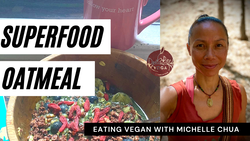 Click on the image above to watch the video on IG @root2riseyoga Since childhood, I've enjoyed my meals even more when I understand and can appreciate the ingredients' nutritional value and health benefits. So here are some ingredients you might choose to put in your oatmeal and a few of their health perks: Try to choose organic whenever possible! - Oats (of course!), help reduce blood sugar levels and cholesterol and promotes healthy gut bacteria - Walnuts, promote brain health and are rich in antioxidants and protein - Pumpkin seeds, boost immune system with zinc - Almond butter, rich source of protein, calcium, magnesium, potassium and manganese - Banana, rich source of potassium, magnesium and Vitamins B6, A and C - Blueberries, rich in antioxidants, fiber and Vitamins C and K - Ginger, Turmeric and Black Pepper, anti-inflammatory - Cinnamon, boost metabolism - Spirulina, rich source of protein, anti-inflammatory and antioxidant - Coconut yogurt, provides probiotics for healthy digestion - Goji berries, rich in Vitamin C and A, fiber and iron and promotes eye health and immune system function And, the most important ingredient for a happy, healthy and harmonious meal is gratitude, so remember all the plants, insects, animals, earth elements and humans who harmonized to produce the nourishment you'll enjoy! SAVE THE DATE for...Debunk to the Myths: Accessible Yoga & Vegan Nutrition for Healthy Living, a workshop with Registered Yoga Teacher Michelle Chua and Registered Nutritionist and Dietitian Jocelyn Harrison on November 5 in Studio City, CA. Join our eNews here to receive your invite! To learn about the author, read Michelle's bio here.
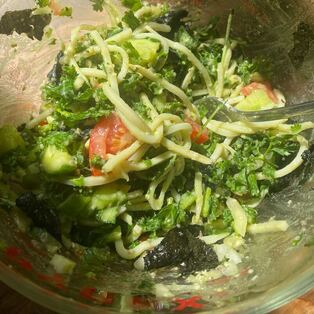 Last June I tried hearts of palm pasta for the first time in the Peruvian Amazon jungle and was intrigued by its texture and subtle deliciousness. I was very excited to find a canned version of the raw pasta at Whole Foods a few weeks ago. It was advertised as low-carb pasta, called Palmini, which could be cooked just like ordinary wheat pasta, but I decided I enjoyed its raw taste and that a green salad would be perfectly cooling after a summer afternoon run. Also, not cooking it meant preserving the potency of its natural nutrients, including minerals like potassium, copper, phosphorus and zinc. As promised, here’s a recount of what I concocted at home. As usual, taste it as you mix it, and alter it to your personal preferences and available resources. I don’t often measure when I cook (unless I’m baking), but here’s an idea of measurements. Enjoy playing with your food! Mostly Organic Ingredients (for 1 serving): -½ a can of raw Hearts of Palm pasta -Large handful of kale -A Persian cucumber -1 lemon -1 tomato -1 avocado -½ a handful of cilantro (helps detox from heavy metals) -3 cloves of garlic (immune-boosting, anti-bacterial and antifungal) -1/3 a small sweet yellow onion -2 Tbs of hemp seeds (good vegan source of protein) -Himalayan salt to taste -Black pepper to taste -2 Tbs Braggs Nutritional Yeast (good vegan source of Vitamin B) -1-2 Tbs Chia seeds -2 Tbs Pumpkin seeds (good source of immune-boosting zinc) -1 sheet of Sushi Nori sea vegetable torn into pieces (good source of iodine) -1 Tbs Braggs aminos -2 Tbs Extra Virgin Olive Oil -Chili flakes to taste  Steps: 1.Strain the amount of hearts of palm that you’ll use (store the rest with the liquid). Set aside. 2.Chop up the kale into small shreds, and place in a bowl with the juice of the lemon and the avocado. 3.Massage the kale in the bowl until tender. This processing aids digestion of its nutrients, as I learned from my days volunteering in the kitchen of Sun Café Organic Vegan Restaurant. 4.Dice the cucumber, tomato, garlic, onion and cilantro and add to the kale bowl. I prefer to cut the garlic into tiny bits. 5. Add in the pasta, seeds and other ingredients and mix it all up. Add the torn nori bits last, so they don't go soggy quickly (unless you enjoy that). 6. Remember to wholeheartedly thank Mother Earth, the creatures and elements that supported and the plant ingredients for sharing their life force energy with you before devouring! :-) This is a key step, and the most important one I learned from the Amazon. Bueno provecho. Have you considered the process of creating art as a wellness practice, a way to flourish mentally, emotionally or physically? Creative arts can range from free-writing in your journal, dancing spontaneously, singing, crafting a vision board, painting, drumming, concocting a new recipe, designing a garden and much more. And it doesn’t require you to classify yourself as “artist,” “dancer,” “musician” or whatever title. It’s part of our human nature to create, and art-making can be a portal to reclaim your wholeness and vibrancy when you value the process and invest in it with an open heart and mind. It doesn't have to be about the product or how it's received. Here are 5 ways creative arts can help you thrive: 1. It boosts your self-esteem. To witness a canvas come alive with your brushstrokes, hear your voice contribute to a melody or see a smile as someone watches you dance can be a rewarding experience. It’s a reminder that no matter how small, your actions can make a difference in this massive universe. Furthermore, completing a creative project offers a sense of accomplishment and a boost of the feel-good hormone, dopamine, increasing drive, confidence and concentration. 2. It relieves stress and promotes sustained present-moment awareness. Making art can channel restlessness of mind or body and release and express stuck energy, like repeating worrisome thoughts. The steady patterns of movement while sewing, quilting or threading beads on a necklace can soothe the mind while harmonizing it with the body. Moreover, when you engage in a creative activity that you enjoy and calls you to stretch your abilities, you set up the conditions to enter flow state. Psychologist Mihaly Csikszentmihalyi explains flow state as total immersion in a task at hand, in which, “There’s this focus that…leads to a sense of ecstasy, a sense of clarity.” Likened to a state of meditation, you become deeply attuned with the here and now and able to respond with skillful awareness, instead of the reactivity triggered by a nervous system during stress mode. 3. It opens you up to possibilities and solutions. Creating art is a continuous process of making decisions, from choosing words that emote resonantly while writing a poem to arranging images in a collage to project an intended feeling tone. It lures you to see the project from different angles in order to problem-solve and play with alterations. This in turn promotes imagination and neuroplasticity, which allows you to change and adapt to new situations. Additionally, experiencing art, like watching a theater production or movie, evokes curiosity. In my interview with Positive Psychology Coach Darcy Caplan, she cited a study by Dr. Martin Seligman, known as the father of Positive Psychology, which concluded that within two to three days of experiencing art, such as being a spectator at a museum, people were more inclined to try something new, like taking a different route home from work or mustering up the courage to start a conversation with a stranger. 4. It allows you to authentically express yourself. “Everyone has a voice and everyone’s voice matters,” emphasized World Percussion Journey Facilitator Delton Davis in our interview about the wellness benefits of participating in a drum circle. He spoke about the need to value each other’s unique ways of expressing ourselves, which manifests in the slightest difference of sound created when each person hits a drum. Among the gifts of a drum circle is the community of acceptance it cultivates through embracing the wide range of rhythms each player contributes. During my years as a schoolteacher working with underserved children, art provided an array of inner resources for non-native English speakers to communicate with a sense of proficiency and depth. Children could truthfully draw how they were feeling or elaborately role-play stories they needed to share. Similarly, adults can capture emotions and thoughts tucked way in their subconscious mind by journaling stream-of-consciousness-style. In this way, Darcy Caplan empowers distressed clients to “name it to tame it,” as she described the process of mindfully addressing harmful thought patterns and difficult emotions to spur healing by bringing them to the forefront of awareness. 5. It empowers you to fully feel your aliveness. In Psychology Today, Dr. Cathy Malchiodi explained, “Our capacity to actually create is where we begin to live more fully, experience transformation, and recover the core of what it means to heal. It is your authentic expression through art-making…why creativity is a wellness practice.” Creating art is a way of giving yourself permission to take up space, to be visible, to own your voice and place in creating in this world. There are a myriad ways to create and experience art. When you choose a form of art that feels personally activating, you unleash a freedom of being that comes with wholehearted expression. Do your research and you’ll likely discover many more ways that creative arts can help you thrive, spanning multiple dimensions of wellbeing. The process of art-making has the capacity to awaken human creativity and depth of consciousness to surpass the boundaries of what we perceived was possible, even amid difficult life circumstances that may seem to inhibit us. Engaging in art strengthens the ability to visualize and manifest how you choose to experience life, as well as provide a channel to shed dark truths from your system. As Writer Maya Angelou conveyed, when the caged bird sings, it reclaims its spirit to experience freedom. Since you’re creating each moment anyway, through your thoughts, actions, words and presence, why not experiment with art as a tool to thrive? Michelle ChuaAlso a Registered Yoga Teacher, she earned her Bachelor's of Arts in Liberal Studies with a Multiple-Subject Teaching Credential specializing in Art at CSU Northridge. For over 10 years, she worked as a teacher for students ranging from 6 months to adults passionately infusing arts throughout core curriculum. Check out how she integrates creative arts as a wellness practice at Thrive Together, Women's Wellness Retreat on May 6-9, 2022 in CA. LEARN MORE... Wholesome Vegan Bowl Recipe
4/5/2022
I had a brief downtime to play in the kitchen between teaching yoga classes today and created a simply delicious vegan bowl that my belly felt inspired to share! It's a triumvirate of nutritious plants: sweet potatoes (high in Vitamins A, C and B6 and manganese and potassium), kale (high in Vitamins A, K and C) and organic tofu (which includes all essential 9 amino acids that your body can't make on its own). Ingredients for 1 serving:
Here are the steps to make it:
How did you like it? Would/Did you add or subtract anything to the recipe? Share your experience below!Want to dive deeper into wholesome plant-based cooking? Itzel of Wild Love Vegan Foods will guide a class on weekly meal prep at our Women's Wellness Retreat, Thrive Together, and cater all our meals with her delicious vegan creations! Check out the itinerary here for May 6-9, 2022 and come join us!
|
A Collective Blog about Yoga Lifestyle & Inspiration
|
REviews of Root 2 Rise Yoga with Michelle chua:Michelle truly lives out what she teaches. She is so much more than a yoga teacher - I learned this when I went on her exquisitely curated trip that she organized to Costa Rica this past June 2018...Hopefully like me, you'll be delighted by her effervescent love of movement, nature, and all people! Michelle clearly stands out with her beautiful and bright energy. I love how her practice and teaching encompass body, mind and spirit. She not only teaches yoga but lives and exudes it. Michelle not only teaches 'yoga', she embodies it fully with her heart and soul... Michelle is by far one of the best instructors I've ever had, period. Patient, clear in her explanations and demos, and so encouraging... My first yoga class was with Michelle years ago. You can have the best (yoga pose) sequence and not teach from your heart. With Michelle, I also feel her passion when I'm in her class. I can see she loves what she does, and she inspired me to want to teach yoga, too. |
Let's connect:Now offering private reiki sessions for stress relief and healing.
I'm so grateful to have met Michelle! Her kind energy opened up my interest in pursuing yoga and meditation. She is such an incredibly light and soul. She starts with grounding ourselves through mindfulness and breathing exercise. She brings the most authentic energy to the class by sharing the history and understanding behind poses, names, and techniques. I truly appreciate her work and impact on my well-being! I’ve had dozens of instructors over the years, but Michelle is far and away the best yoga mentor I’ve ever practiced with. She epitomizes grace during these difficult times. Michelle has saved my sanity and my back while working from home, keeping me grounded with her sharing of yogic teachings and meditation techniques. Her repertoire of physical asanas is encyclopedic, and I’ve loved learning new poses and stretching my boundaries. Jump in, all. You’ve got this! |
©2010 Root 2 Rise Yoga
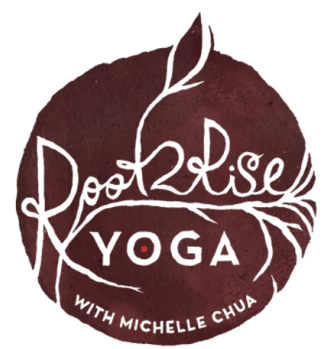
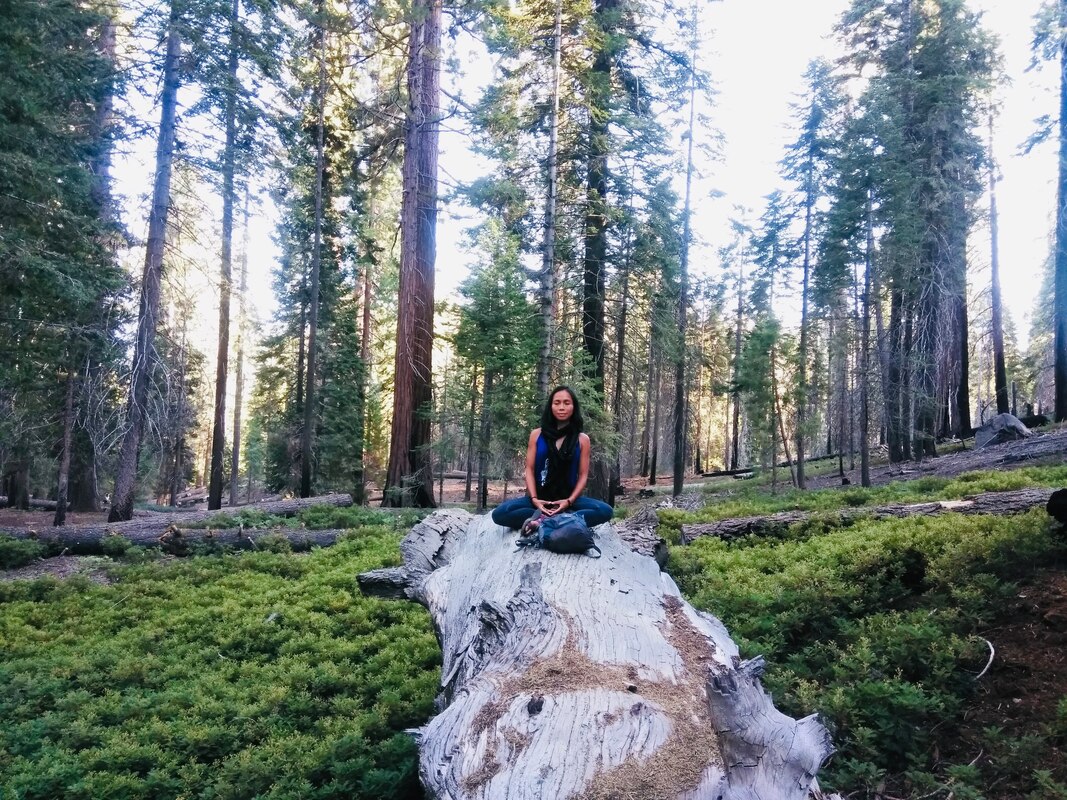
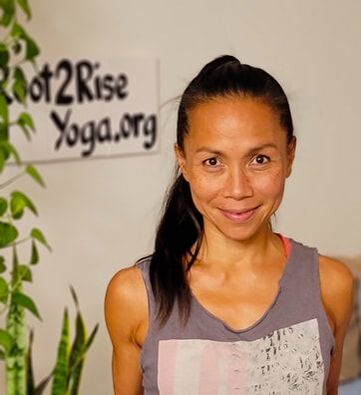
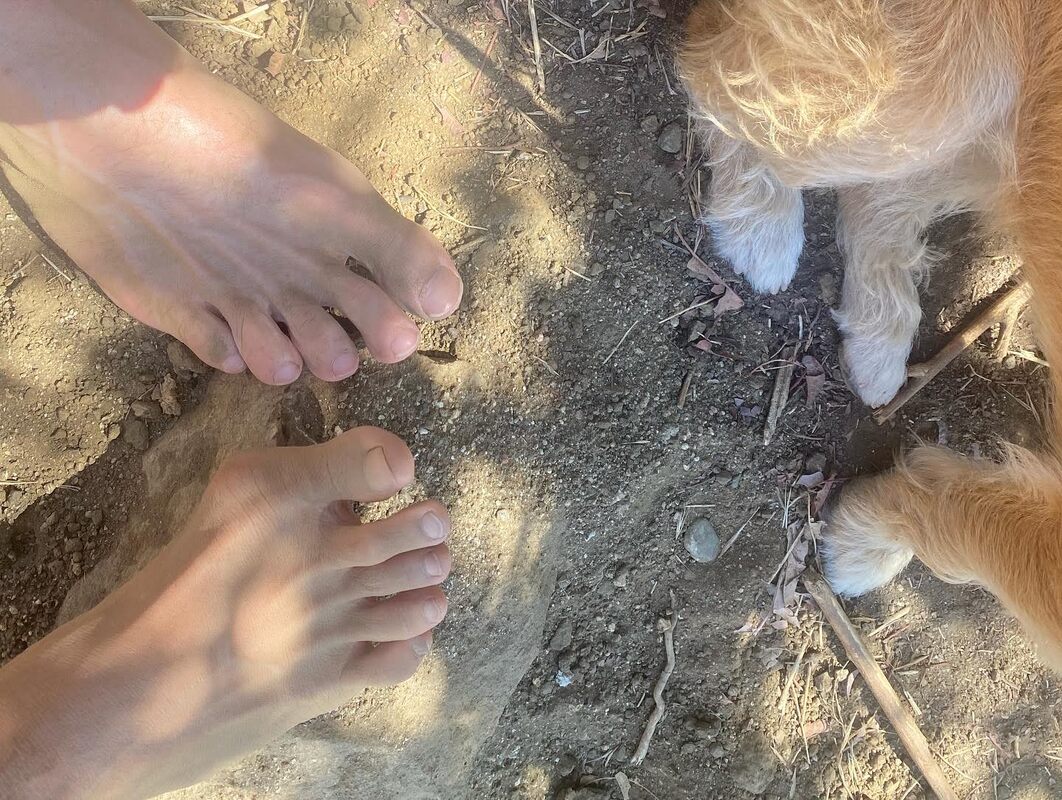
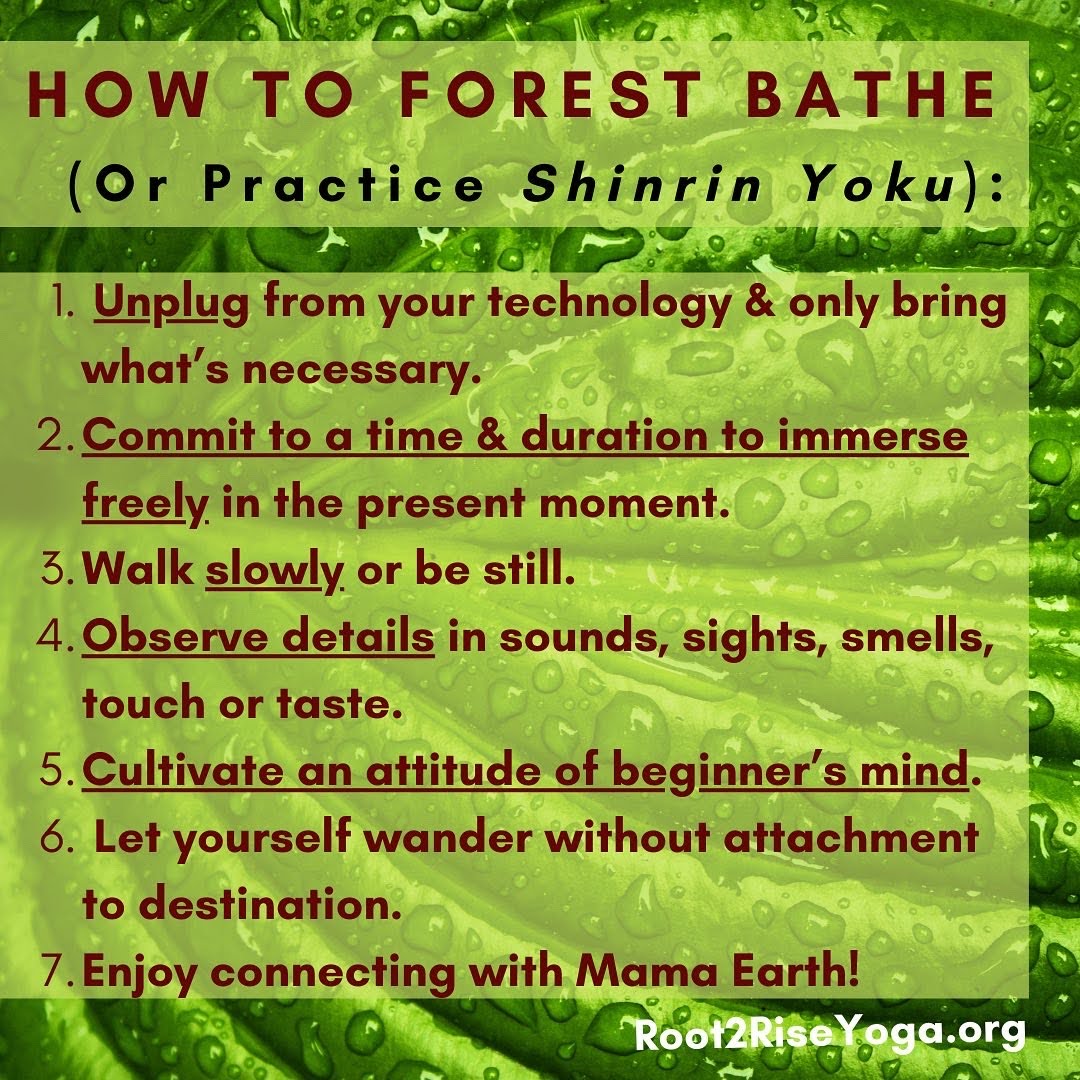
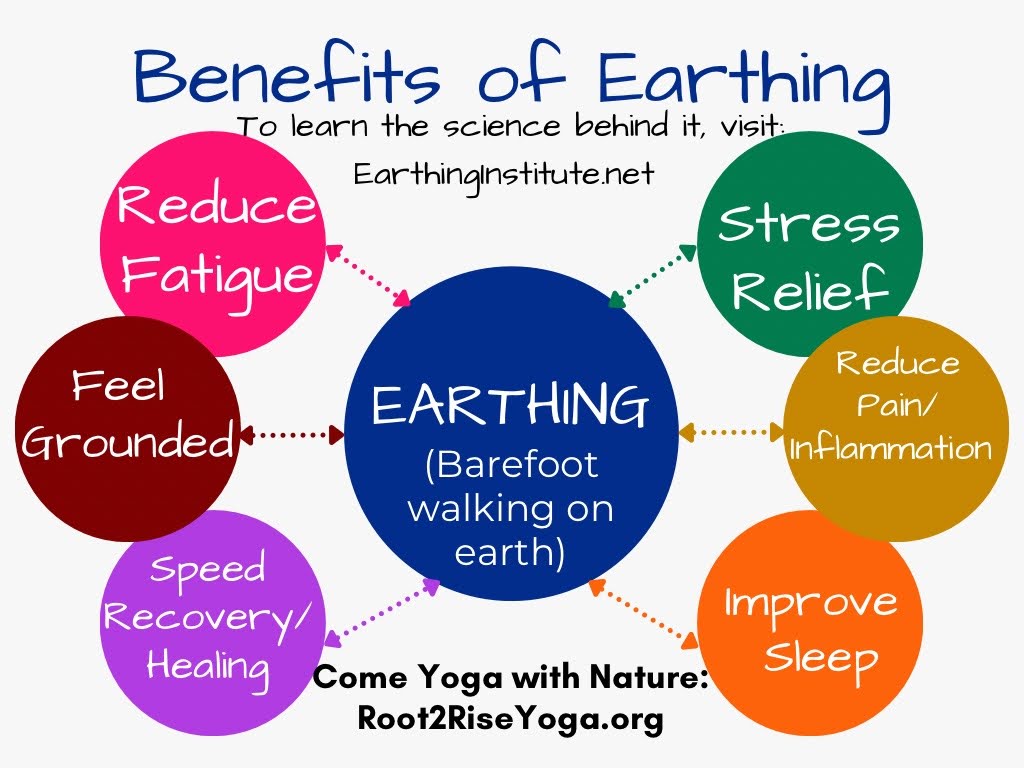

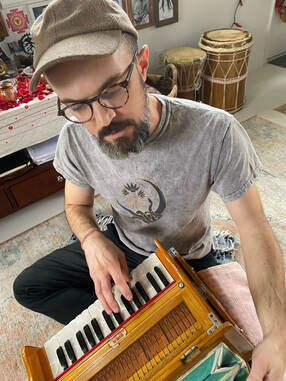
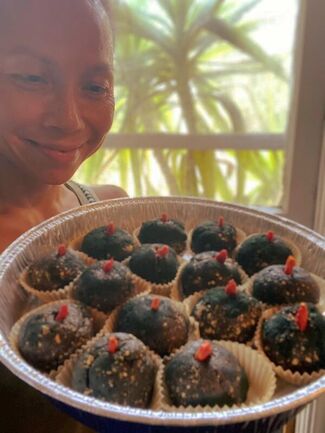
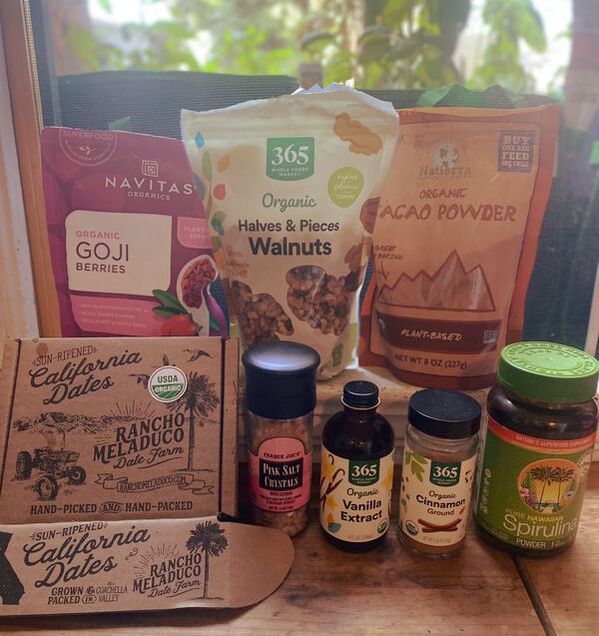
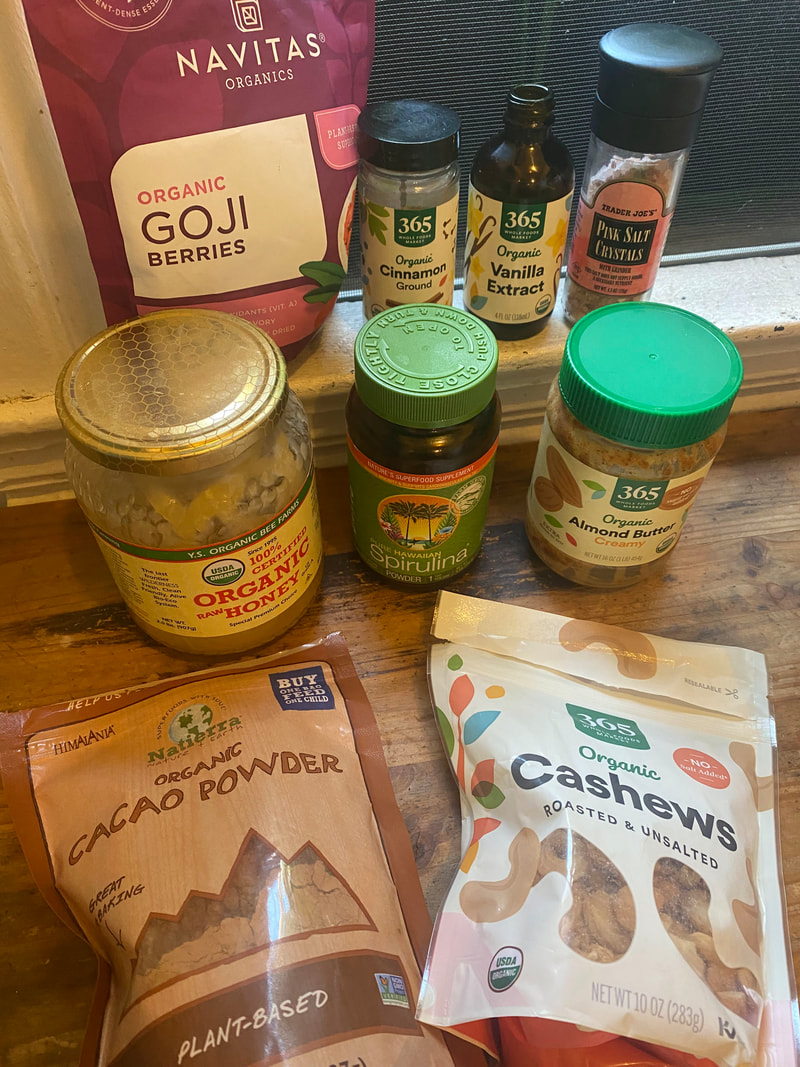
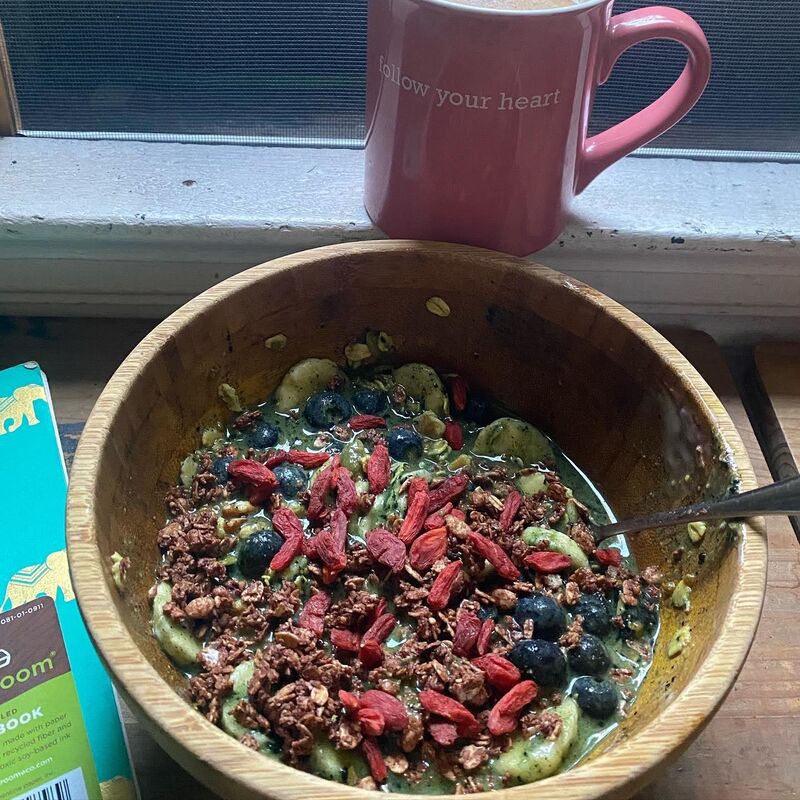

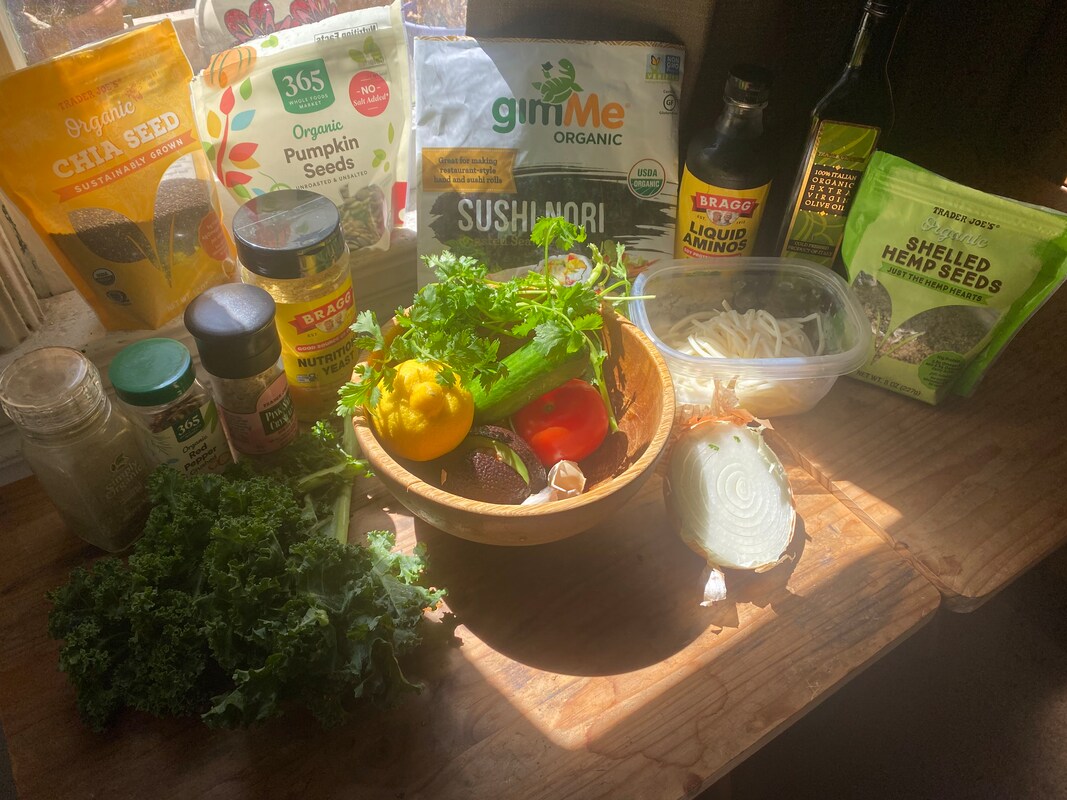
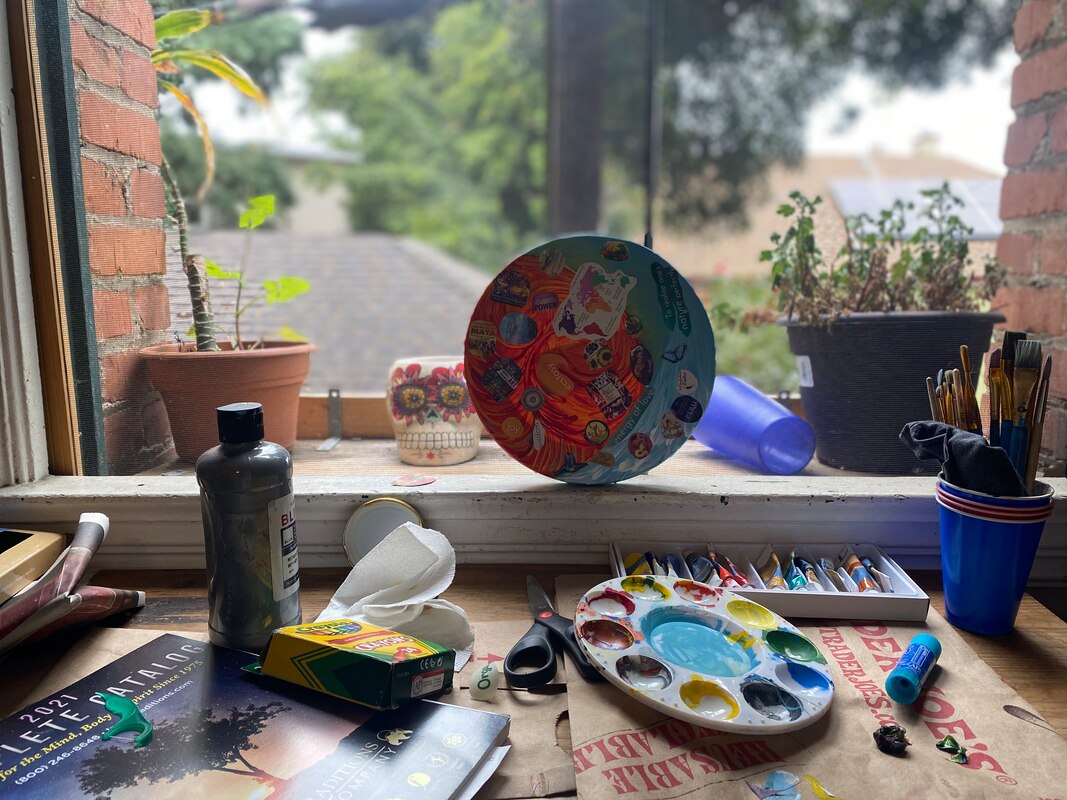

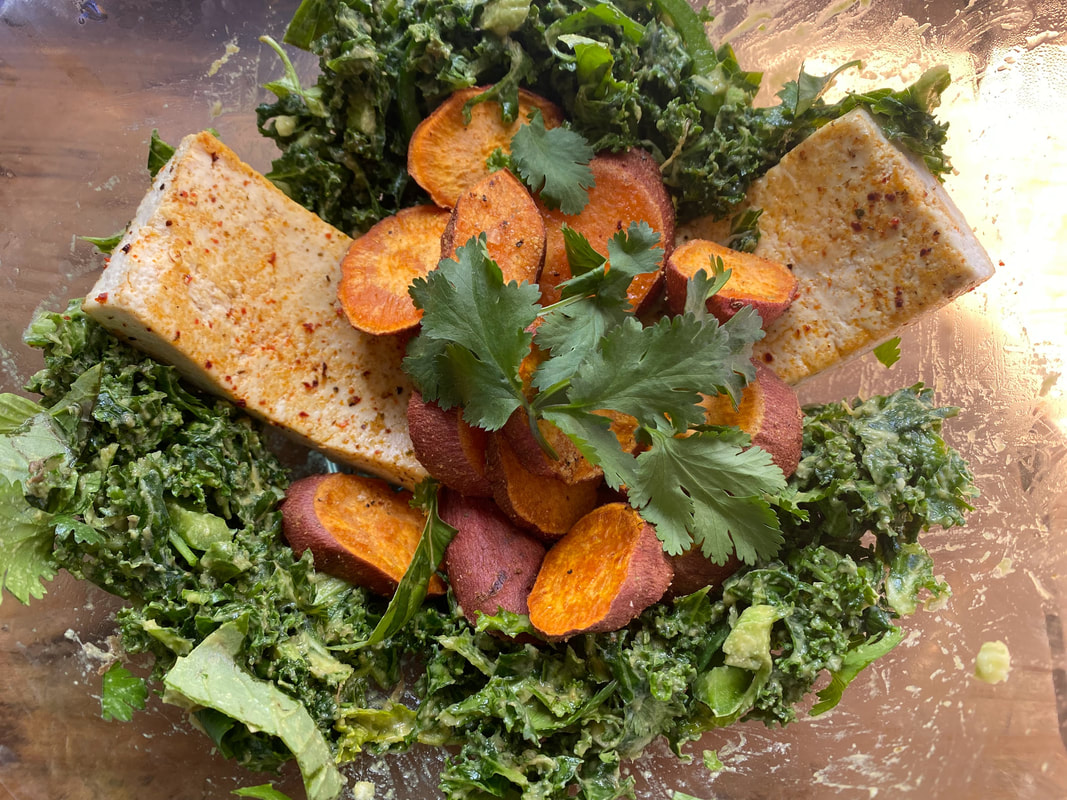
 RSS Feed
RSS Feed

